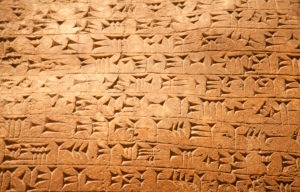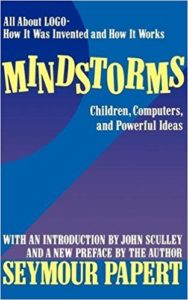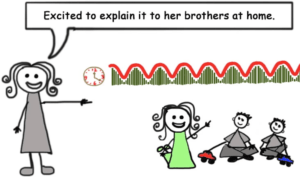Our greatest asset
Trigonometry in Grade 3
Related resources
Video Transcript
 Our greatest asset, and our greatest opportunity in mathematics education, are the young mathematicians that we work with, and their amazing minds.
Our greatest asset, and our greatest opportunity in mathematics education, are the young mathematicians that we work with, and their amazing minds.
Chances are that we all carry some negative experiences with us from our mathematics learning in school. We have to be careful not to pass this on to young children.
Underestimating children
It’s quite common in our society for adults to underestimate young children. In fact, this is a historical pattern, dating back thousands of years.
 The ancient Sumerians wrote on clay tablets to complain about their new generation: that young kids didn’t pay attention, they didn’t have a work ethic, they weren’t polite, and generally were a disappointment. Every generation that followed has said something similar, including our generation.
The ancient Sumerians wrote on clay tablets to complain about their new generation: that young kids didn’t pay attention, they didn’t have a work ethic, they weren’t polite, and generally were a disappointment. Every generation that followed has said something similar, including our generation.
It’s not easy for us to create an education system worthy of children’s incredible minds, if we underestimate them.
Can young children think abstractly?
Jean Piaget brought to us the wonderful idea of constructivism: that young children develop an understanding of mathematics and other ideas from the inside out. They develop their own understanding as opposed to having it ready-made, transferred to them.
Jean Piaget also brought to us the idea of stages of cognitive development. And he said that young children are concrete thinkers and they develop their capability to abstract later on, maybe around age 12.
 Seymour Papert who worked with Jean Piaget disagreed. He said these stages you’ve identified are not in children’s minds, they are in the learning cultures that we create in classrooms. They are a symptom of the way we educate them, and not their potential.
Seymour Papert who worked with Jean Piaget disagreed. He said these stages you’ve identified are not in children’s minds, they are in the learning cultures that we create in classrooms. They are a symptom of the way we educate them, and not their potential.
Kieran Egan said, young children can’t abstract? How could that be possible? Because if they can’t abstract, how would they ever develop language?

When we develop understandings of words like table, chair, dog, we look at a variety of these objects in the world around us, and extract the essential characteristics.
For example, there are dogs that are big, small, different colours, different dispositions, and we extract the essential characteristics, and with that abstraction that we create, we then look around the world and identify them, and distinguish them from other things that look like them.
So, young children naturally abstract at a young age, to be able to develop understanding of language.
A thirst for mathematics
Young mathematicians thirst for mathematical ideas, for big ideas, for surprises, and for mathematical insights.

And when they share these ideas with their parents, we get incredibly positive feedback.
For example, working in a classroom where the teacher wanted to cover the content of bar graphing, we developed an activity where students would measure the height of time, measuring the height of hours on a clock and graphing those as a bar graph, and noticing the patterns in them.
And a related activity is having a yellow dot on a car tire, and imagining what path that dot would travel as the car moves forward. What would that graph look like?
Children created comic strips of how they might share these ideas with parents. And then they shared those when they went home, along with some of the other artefacts.
We took parent comments, we put them into a Word document, we organized them into themes, we took out any repetition, and then we made that into a song. And then children sang that song back to their parents.
And we’ll end this series of videos with giving you an opportunity to listen to the children, singing to their parents.
The music video, Dots, Clocks & Waves, plays at the end of this video. Here are the song lyrics:
| Dots, clocks and waves
my daughter explained she was amazed a dot on a car tire the wave pattern it’s great to see my son excited |
my son enjoyed he shared his comics the height of every hour like the height of a dot it’s great to see my daughter excited |

